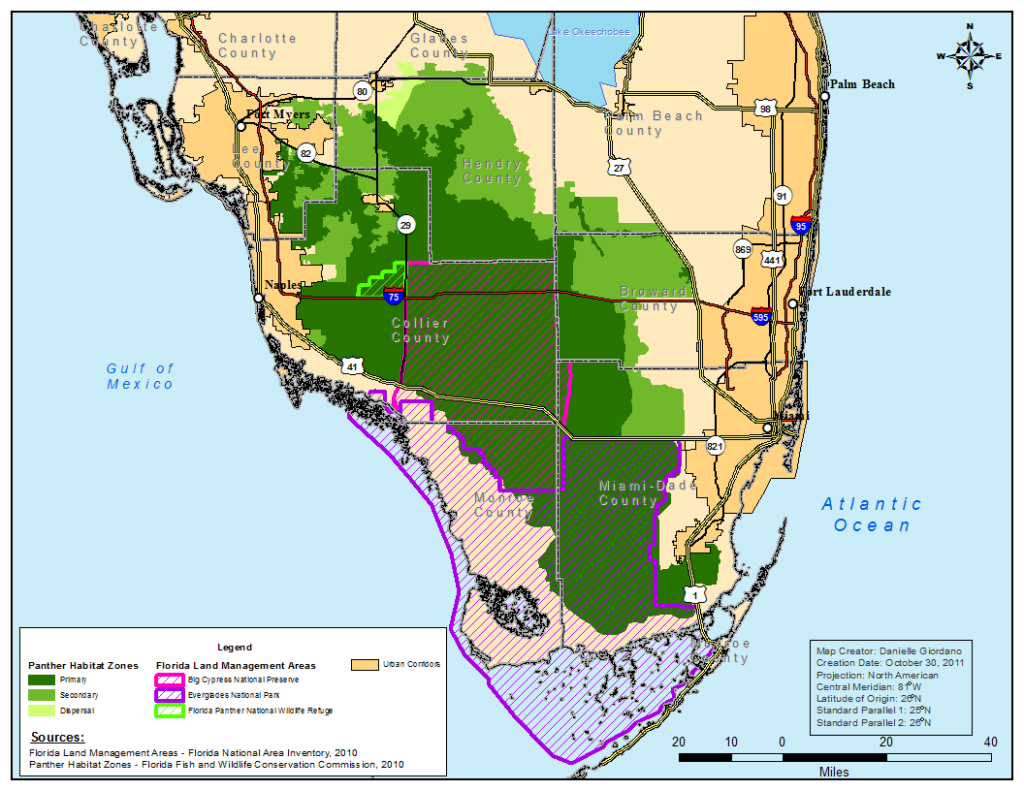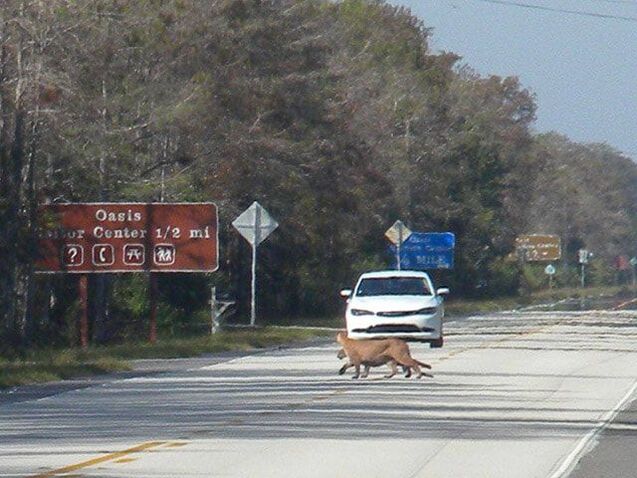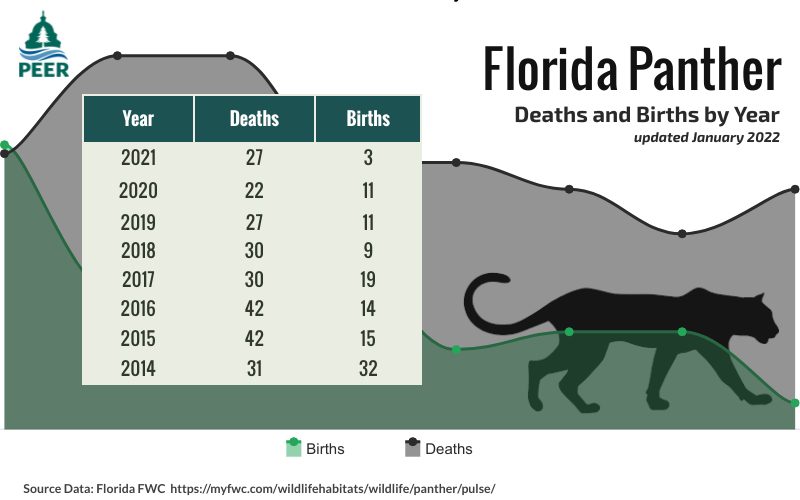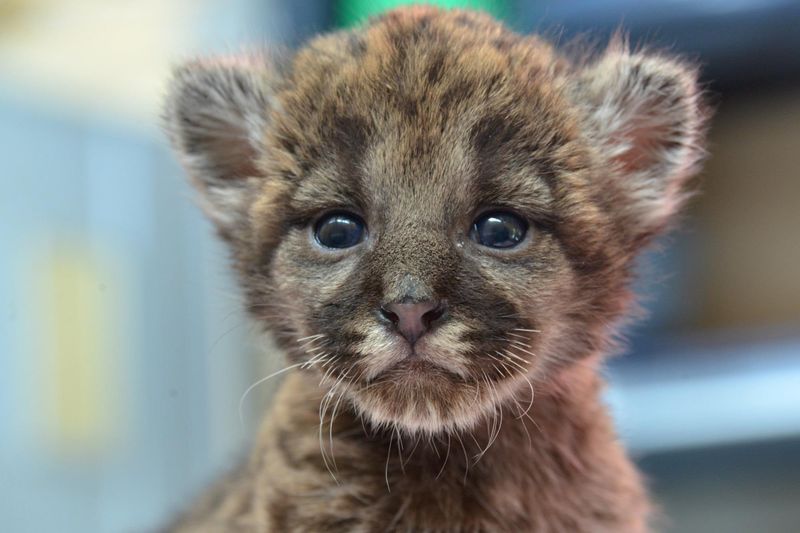“When a man has pity on all living creatures, then only is he noble” ~ Siddhartha
THE CRITICALLY ENDANGERED FLORIDA PANTHER
Before European settlers arrived at its new home in the seventeenth century, the Florida panther’s historical range once included the southeastern U.S. from Arkansas to North Carolina, including all of Florida. However, by the 1970s, the population of these critically endangered felines had plummeted to approximately 20 Florida panthers still surviving in the wild.
Various efforts, most notably the development of wildlife corridors and wildlife crossings, by governmental agencies working in conjunction with private partners helped to slow the doomsday prospect for survival of the Florida panther. The USFWS reports that the population has rebounded from an estimated low of 10 animals to over 200 animals since it was put on the Endangered Species list in 1967.
Florida’s Southwest Ecosystem Can Ill-Afford the Loss of this “Umbrella” Species
One may ask, “Why are these panthers on our roads?” A better question might be, “Why are our roads in their habitat?” Habitat fragmentation – – the breaking apart of native wildlife ranges – – is occurring at an alarming rate. Panthers need large ranges to hunt, find mates, and raise kittens. The home range of panthers is approximately 75 – 200 square miles (males up to 200 square miles, females up to 75). Human encroachment has made it literally impossible for panthers to live their lives without crossing roads, and these big cats rely on us to make those crossings safe.

As Florida Fish and Wildlife Conservation Commission (FWC) wildlife biologist Darrell Land observed, “In the panther’s world, big things [like cars] don’t move this fast. You only get a chance to learn the lesson once, and if you learn it you’re dead.” This is particularly heartbreaking when we consider that a panther can live twenty years in the wild. It is incumbent upon us humans to ensure panthers, and other wildlife, safe passage across our roads.

The subspecies, known as the Florida panther is an “umbrella species”, which means a species whose conservation is expected to confer protection to a large number of naturally co-occurring species. With respect to the Florida panther this translates to mean that the survival and health of their population reflects and affects the health of their entire ecosystems. When the panther suffers, Florida’s natural world and all the species in it suffer. This includes humans, who rely on many “ecosystem services”, such as food, clean drinking water and decomposition of wastes.
An Existential Threat to Florida panthers: Wildlife-Vehicle Collisions
Currently, the Florida panther is suffering from an existential threat: Motor vehicles. The vast majority of panther deaths are due to vehicle collisions. In fact, of the 82 reported deaths from 2018 to mid-2021 were due to wildlife-vehicle collisions (WVCs), making up 85 percent of total deaths.

The chart above juxtaposing birth and death rates of the Florida panther in recent years strongly suggests that without intervention this iconic species will soon become extinct. This tragic reality is further exacerbated by the fact that the latest reported toll (2022) reveals that 25 of 27 panther deaths were caused by motor vehicles.

Another sobering note comes from the nonprofit panthercrossing.org, which points out that over 230 panthers have been lost to vehicular collisions since 2012. The nonprofit also reports that “entire litters have been known to die in vehicle collisions”. According to the FWC, “Kittens still young enough to be living with their mothers make up 22 percent of deaths.” This is particularly heartbreaking when we consider that a panther can live twenty years in the wild.

As the Sierra Club notes, a huge part of the solution here is the creation of wildlife corridors that give panthers safe spaces to travel. But wildlife corridors, as well as wildlife crossings, are expensive and often politically challenging projects. Additionally, waiting for these large projects to be completed costs time the Florida panther may not have. Further, the reach of corridors and crossings is but a tiny fraction of our 4-million-mile public road network.
Clearly, there is a compelling need to protect this magnificent creature from WVCs. Once the National Anti-Roadkill Project (NARP) is operational, it intends to address this need with a fresh approach that can significantly reduce the number of panthers lost as a result of being stricken by motor vehicles. NARP’s action plan of zealously implementing driver safety measures and road safety measures will complement the progress made by corridors and crossings and make a difference between life and death for this keystone species. These cost-effective Mitigation measures can save the precious few panthers and the natural world they represent. The time is now to save the critically endangered Florida panthers before it is too late for this beautiful creature.
By the Numbers: Saving the Florida Panther (The Nature Conservancy)




